History of the Tailsitter Airplanes
A vertical takeoff, level flight and a tail landing
- first VTOL concepts
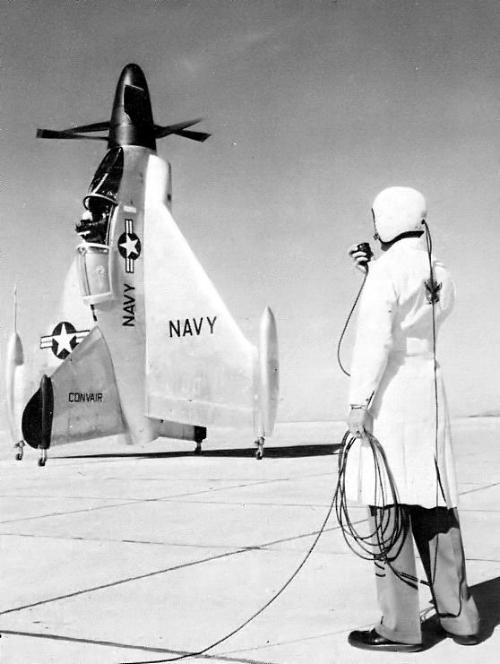
They are a truly remarkable piece of aviation history - so called "Tailsitter" airplanes. Made in the late 40’s and early 50’s they were an attempt to eliminate the necessity of runways.
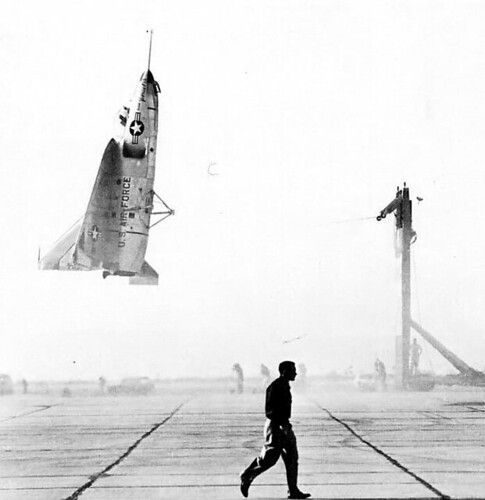
In the later stages of WWII the German company Focke Wulf had a spectacular design for a tailsitting fighter: the Triebflügeljäger. The idea was a fighter that would take off and land vertically on its tail. With the Allied bombardment devastating the country's armaments industry it was crucial for the Germans to have interceptors that could take off and protect German factories. The idea was to station fighters near industrial areas and to get them into the air without the use of increasingly bombarded runways. However, the design came too late in the war for it to reach a prototype or production stage.
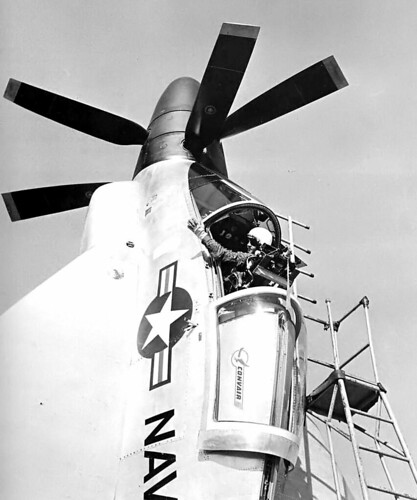
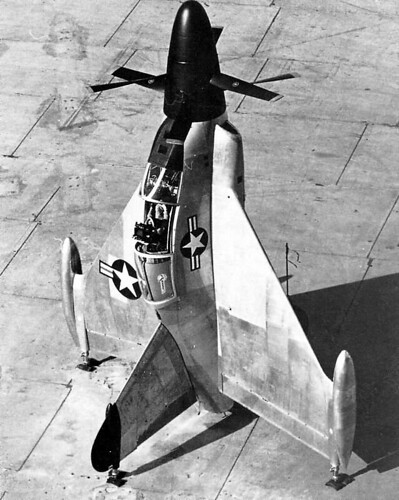
After the war the Americans saw the potential in such a design. With the danger of Western Europe falling under a Soviet invasion and the possible denial of airfields, project Hummingbird was born in 1947. The idea was to develop an interceptor that could take off from virtually anywhere. There were plans to station them in fields and on ships both military and merchant. There were even talk of a submarine based fighter.

Both Convair and Lockheed were commissioned to make prototypes: the XFY-1 and XFV-1. These fighters featured turbo prop engines with contra rotating propellers. A jet powered version was also produced in the Ryan X-13 Vertijet. The XFY-1 was the first tailsitter who completed a vertical takeoff, level flight and a tail landing during test flights.
The XFY-1, nicknamed "Pogo"
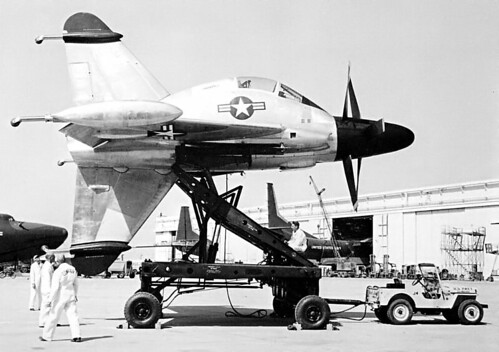
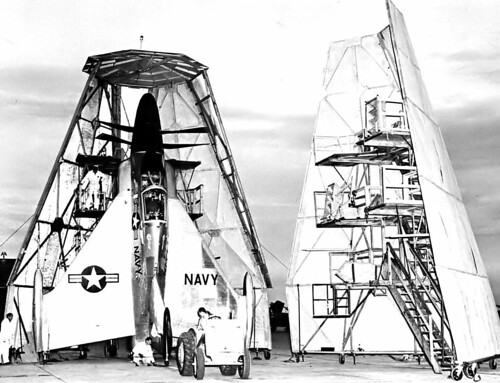
XFY-1
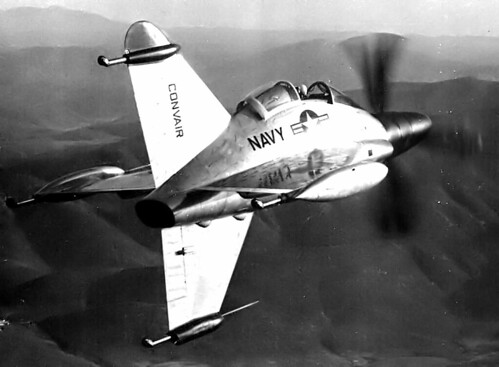
XFV-1
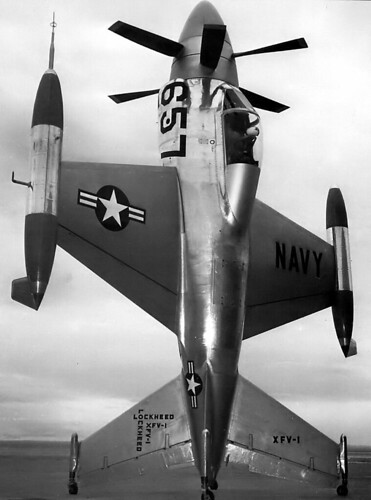
XFV-1
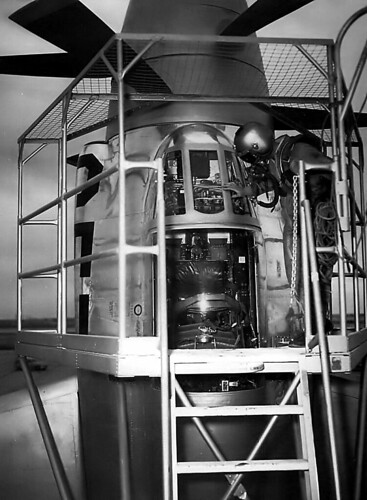
The XFV-1 was not as successful as the XFV-1. Landing gear had to be mounted in order to conduct test flights:

"The Coléoptère" was a French prototype, having so called "annular wing configuration" (designed in 1952, first flight in 1959)
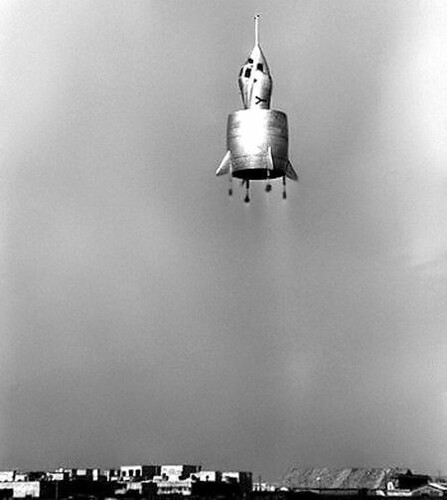

Ryan Company X-13 "VertiJet" (1953):

The X-13 was a jet powered prototype capable of vertical takeoff and landing. This design proved to be much more difficult to steer during takeoff and landing compared to the prop driven ones. It did not have the benefit of airflow over the rudders produced by the props.
The engine of X-13:
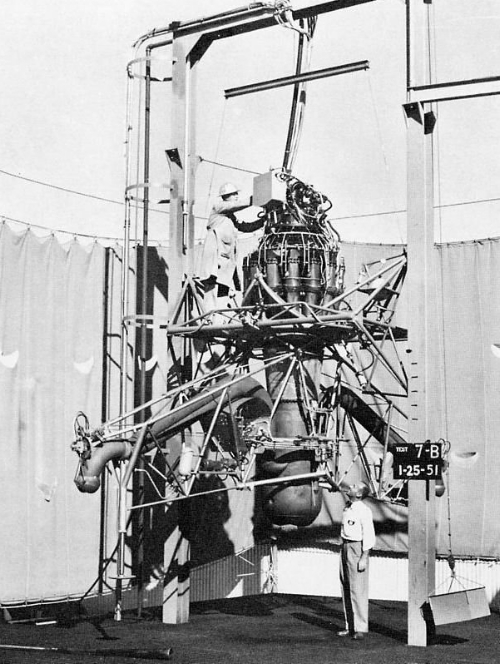
X-13 Vertijet during trials:
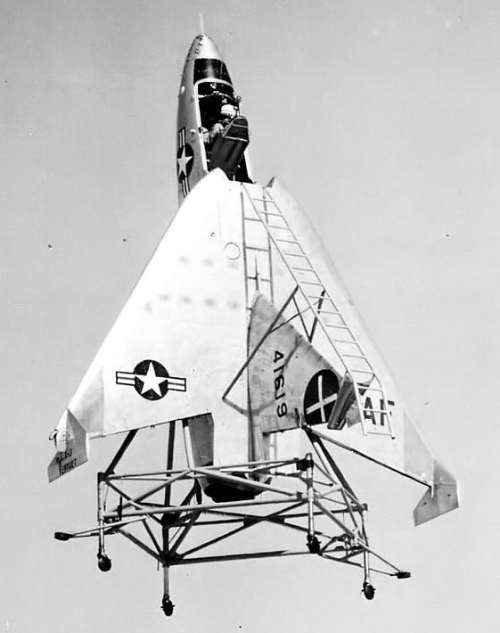
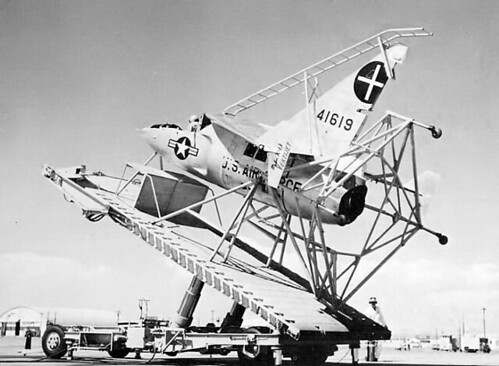
The X-13 prototype performing a successful test flight in front of Pentagon officials:
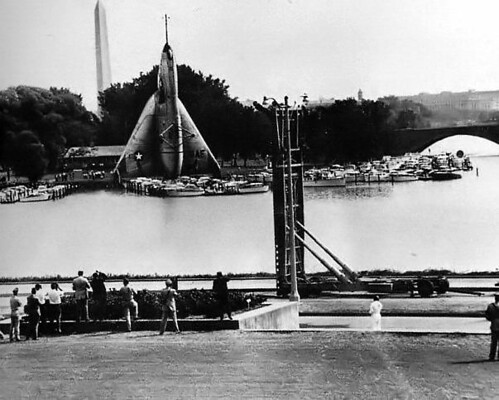
The Hummingbird project proved to be a difficult one. The tailsitters could not meet the performance requirements set by the Navy and Air force. In the end they were abandoned and the dream of an aircraft that could take off and land on its tail was left to writers of science fiction novels.

All images are from this beautiful french site.
Photographs are courtesy U.S. Navy and U.S. Federal Government.
For further reading please see:
Fogonazos: VTOL prototypes
Global Security: X-13
Global Security: XFY-1
Global Security: XFV-1
Article by Erlend Aaseth, Giant Earth for Dark Roasted Blend.
- first VTOL concepts

They are a truly remarkable piece of aviation history - so called "Tailsitter" airplanes. Made in the late 40’s and early 50’s they were an attempt to eliminate the necessity of runways.

In the later stages of WWII the German company Focke Wulf had a spectacular design for a tailsitting fighter: the Triebflügeljäger. The idea was a fighter that would take off and land vertically on its tail. With the Allied bombardment devastating the country's armaments industry it was crucial for the Germans to have interceptors that could take off and protect German factories. The idea was to station fighters near industrial areas and to get them into the air without the use of increasingly bombarded runways. However, the design came too late in the war for it to reach a prototype or production stage.


After the war the Americans saw the potential in such a design. With the danger of Western Europe falling under a Soviet invasion and the possible denial of airfields, project Hummingbird was born in 1947. The idea was to develop an interceptor that could take off from virtually anywhere. There were plans to station them in fields and on ships both military and merchant. There were even talk of a submarine based fighter.

Both Convair and Lockheed were commissioned to make prototypes: the XFY-1 and XFV-1. These fighters featured turbo prop engines with contra rotating propellers. A jet powered version was also produced in the Ryan X-13 Vertijet. The XFY-1 was the first tailsitter who completed a vertical takeoff, level flight and a tail landing during test flights.
The XFY-1, nicknamed "Pogo"


XFY-1

XFV-1

XFV-1

The XFV-1 was not as successful as the XFV-1. Landing gear had to be mounted in order to conduct test flights:

"The Coléoptère" was a French prototype, having so called "annular wing configuration" (designed in 1952, first flight in 1959)


Ryan Company X-13 "VertiJet" (1953):

The X-13 was a jet powered prototype capable of vertical takeoff and landing. This design proved to be much more difficult to steer during takeoff and landing compared to the prop driven ones. It did not have the benefit of airflow over the rudders produced by the props.
The engine of X-13:

X-13 Vertijet during trials:


The X-13 prototype performing a successful test flight in front of Pentagon officials:

The Hummingbird project proved to be a difficult one. The tailsitters could not meet the performance requirements set by the Navy and Air force. In the end they were abandoned and the dream of an aircraft that could take off and land on its tail was left to writers of science fiction novels.

All images are from this beautiful french site.
Photographs are courtesy U.S. Navy and U.S. Federal Government.
For further reading please see:
Fogonazos: VTOL prototypes
Global Security: X-13
Global Security: XFY-1
Global Security: XFV-1
Article by Erlend Aaseth, Giant Earth for Dark Roasted Blend.







 My StumbleUpon Page
My StumbleUpon Page




No comments:
Post a Comment